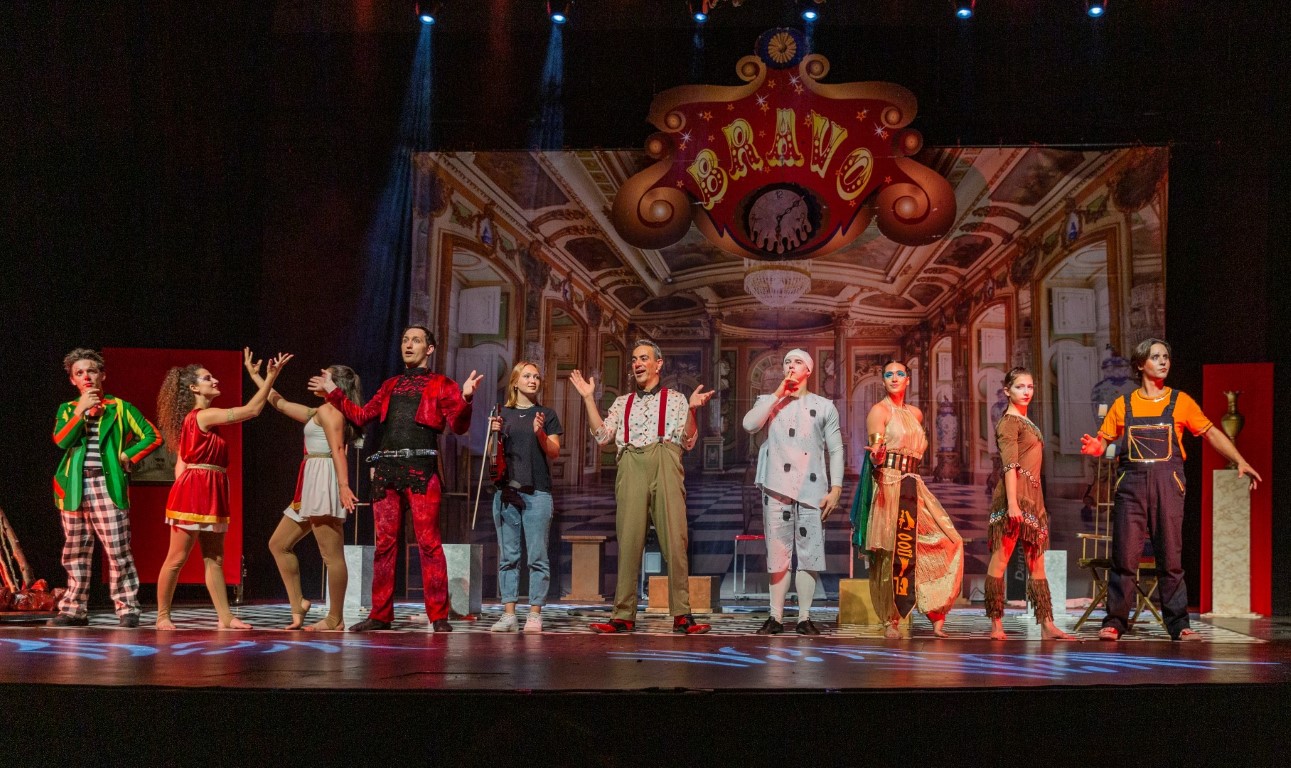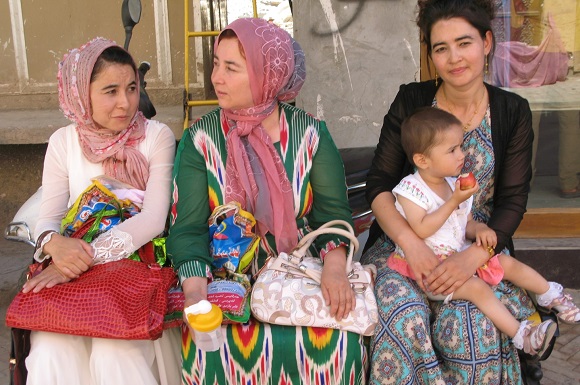Bali - Exotic, Romantic and Erotic Island
Bali is a small island in Indonesia that has become famous thanks to artists from all over the world who began to come to it in the 1930s. Its exotic, erotic, and romantic atmosphere attracts many spiritual people, artists, and a lot of tourists. It is the only island in Indonesia whose residents are Hindu and not Muslim
Balinese dance Photo: Ronit Svirsky
Ubud - a village of artists turned into a tourist attraction
The city of Ubud on the island of Bali in Indonesia began as a local artist village and over the years developed galleries, art centers, and museums. It has become a tourist attraction with resorts, hotels, restaurants, entertainment venues, and nightclubs. Ubud is a meeting place with urban life that has the charm of the East and a unique character that is the product of religion, culture, and customs. It has been preserved like a pearl in a time capsule. It is difficult to distinguish between the architectural lines of a private house and a temple or a hotel. They are designed like small palaces in shades of red or black and stand side by side in the same residential complex. At the entrance of each house stands a fixture or a stone chair on which daily offerings are placed. Around Ubud, there are villages where families of artists still live, and galleries displaying local art fields are located along the streets
Residential complex with a temple Photo: Ronit Svirsky
Artists at work Photo: Ronit Svirsky
A gallery of wooden artworks Photo: Ronit Svirsky
A "Joyful" Burial Ceremony
The Balinese people attach great importance to funeral ceremonies and allow tourists to join the journey that takes the deceased from the physical world to the spiritual world. It starts with a message that passes within the community as insider information for relatives only about the day and time of the funeral ceremony. With the right connections, we were allowed to participate in it as the only strangers. We were led to a crossroads in the heart of a residential neighborhood, dressed in the traditional sarong that is like a wrapped skirt, and waited for the sound of the gong announcing the start of the funeral procession. Within minutes, a procession arrived that looked like a festive and joyous celebration. Hundreds of men and women dressed in traditional clothing marched quickly as they accompanied a group of young, sturdy men dressed in black who carried a beautiful, golden litter containing the coffin with the body of the deceased
To confuse any evil spirits Photo: Ronit Svirsky
Residents of Bali, whose faith is Hinduism, do not sanctify the deceased body, but only the soul within it. Therefore, their funeral customs are completely different from those practiced in other religions around the world. The ceremony of cremating the body is only held when the date is appropriate according to the calendar, and when the family manages to collect enough money to hold the event. The deceased remains in the house while their body is wrapped in cloth, and this can last for months and sometimes years until the funeral takes place. The community comes together to assist in the preparations and musicians from the community accompany the procession. Building the coffin, preparing the offerings, catering, and drinks cost a lot of money. The funeral we witnessed cost about four thousand dollars, while the average monthly salary in Bali is 170 dollars
Drummers band Photo: Ronit Svirsky
The procession advanced at a breathtaking pace, and at the main intersections, the bearers of the litter seemed to lose control of the large platform and swayed left and right. In fact, they did so intentionally to confuse any evil spirits so they wouldn't interfere with the final journey of the deceased. We joined the procession as it marched towards the holy compound. They treated us like welcome guests and allowed us to be part of them without feeling like we invaded their privacy. Two large orchestras sat around the golden and adorned ark. They played rhythmic music with great intensity and stirred up the crowd, who moved to the beat of the drums and some also danced. The body, wrapped in colorful blankets, was lowered from the litter and placed in the decorated ark. The family and mourners waited for the arrival of the Brahmin priest who would lead the ceremony
Purifying and laying rituals on the body of the deceased Photo: Ronit Svirsky
He arrived dressed in white and family members crowded around the chest while women sang quiet and carried baskets of heavy flowers and fruits. The Brahmin bathed the body of the deceased in holy water and placed the offerings one by one on top. When the body was purified and all the offerings were placed on top, they put the personal belongings of the deceased and things that he loved especially under the chest and began preparations for the cremation. A close family member lit the fire from under the chest and the flame burst in full force. This is the moment when the soul leaves the body and returns to the house where it lived to continue living with the family. The remaining bone fragments are crushed into ash and put into a white cloth bag, which is placed in a green coconut shell. The family travels to a river, lake or sea and places the coconut shell that drifts away. They do not mark the anniversary day and there are no mourning ceremonies after the cremation because for them the soul continues to exist and sometimes even returns in a new reincarnation
The cremation ceremony Photo: Ronit Svirsky
Shit Coffee
The farmers in the area of Ubud mainly cultivate citrus fruits, bananas, cantaloupes, mangosteen, durian, mango, guava, avocado, and specialize in growing coffee plantations. The green landscape looks like a jungle full of trees and vines, but in fact, these are densely growing agricultural fields thanks to abundant rainfall and water
Kopi Luwak Photo: Ronit Svirsky
The Luwak Photo: Ronit Svirsky
Coffee lovers will be happy to know that in Ubud, there are coffee plantation centers in places where coffee plantations are spread. The site is designed like a botanical garden with different types of plants, flowers and plants with explanatory signs with their names. Under a small shelter, an old woman sits and roasts coffee beans, which scent fills the air and enhances the craving for the black beverage. In the open space facing the green fields of coffee plantations, small cups with samples of different types of coffee and tea are served to us. Vanilla coffee, ginger coffee, chocolate drink, latte, jasmine tea, and others. The most intriguing coffee is called Luwak, and after tasting many samples in small cups, it is served to us in a large coffee cup. The expectation was to taste one of the best coffee drinks we've ever had. It didn't happen, the taste was that of strong American coffee, and a professional palate was required to distinguish it as something special
Coffee and tea flavors that are grown in a plantation Photo: Ronit Svirsky
The global advertising campaign for Kopi Luwak coffee began a few years ago when they discovered a small mammal that looks like a tiny raccoon and loves coffee beans. It sleeps during the day and wakes up at night, able to identify the ripe, red coffee beans. Instead of chewing them, it swallows them whole to aid in digesting the leaves and fibers it eats. The discovery that thrilled coffee lovers was that the Luwak defecates the intact and superior coffee beans, which enrich the flavor with its digestive juices, turning the beans into a royal beverage. Its price is also measured in gold, and those who want to buy this coffee in whole beans or in ground form can do so at the visitor center store
An old woman roasting coffee grains צילום: רונית סבירסקי
Dance Theater
To complete the experience of our visit, we went to see a theater and dance performance, which is performed for locals for hours. Tourists are given a one-hour sample, which is also a bit long and part of it is conducted in the Balinese language. The characters are taken from Hindu mythology and so is the story. A group of musicians accompanies the show, the costumes are impressive and in parts where there is dancing and movement, the humor can also be understood. The women's hand movements are delicate and elegant, and the animal costumes are very detailed and impressive. It is not a must if you are not a fan of theater and dance
Photo: Ronit Svirsky
Photo: Ronit Svirsky
Kamandalu Resort
In one of the suburbs of Ubud lies the beautiful Kamandalu Resort, surrounded by residences and temples. Along the neighboring streets, there are stalls and galleries of craftsmen and artists that add to the unique character of the place. Works of wood, rattan baskets, furniture, sculptures, batik art, brassware, and a variety of arts that cannot be found elsewhere in the world
Pools at different levels Photo: Ronit Svirsky
As you enter the hotel, you're greeted by a giant water fountain with a floating sphere and an open lobby in the style typical of the Far East. The hotel is spread over a vast area, and you can explore its surroundings among lakes, water features, fruit trees, giant bamboo, lush tropical vegetation, and flowers in a variety of colors. The area is adorned with sculptures, pebble surfaces for resting, large terracotta pots, masks, water fountains, bamboo groves, a hanging bridge, and decorated gates that look like entrances to a temple. The infinity pool has a built-in bar and is designed like an island in the water. There are different levels in the pool and sunken sofas. There are also rattan sofas, intimate seating areas, rice terrace-like balconies, and koi fish ponds
A bathroom overlooking the garden Photo: Ronit Svirsky
Giant suites ranging in size from standard to villas that are the size of an apartment. Each suite has a double entrance and is surrounded by walls in an ancient style. A large wooden gate opens into a small garden from which you enter the suite. It is designed with light-colored marble floors in the interior space and cobblestone paths in the garden. The suite is surrounded by coconut trees, paradise bird flowers, pitaya, and various vines. In the garden, there is a thatched roof with a double sofa and turquoise blue cushions, a lawn combined with cobblestones, and a privacy wall that prevents neighboring guests from being seen. In each suite, there are two bathrooms, one indoor surrounded by windows facing the garden, covered in natural marble from floor to ceiling. Another rainfall shower is installed in the garden under the starry sky canopy, surrounded by vegetation and a high fence that maintains guest privacy
The equipment is modern and combined with traditional elements. A sliding door separates the bedroom from the bathroom, and there is a small living room with a table and a sofa overflowing with embroidered cushions and a beautiful pyramidal-shaped wooden ceiling. The bed is an Epirian bed made of solid wood, wrapped in thin white curtains, equipped with a thick comfortable mattress and a pair of cushions with different softness levels. The space is illuminated by lighting fixtures that range from the most modern to the classic and local. Cream-colored curtains pour in from all sides and protect against the morning light. There is also a coffee corner with an espresso machine and exquisite tea blends



